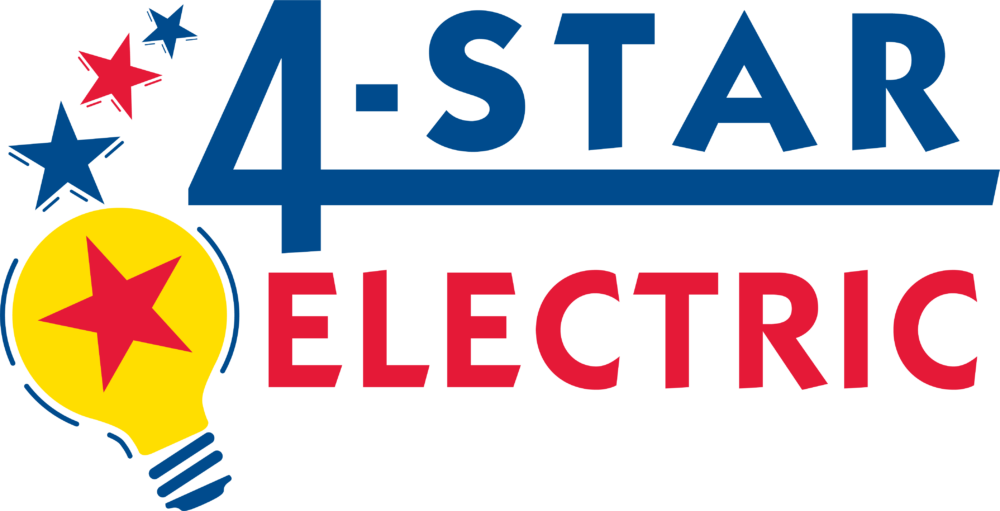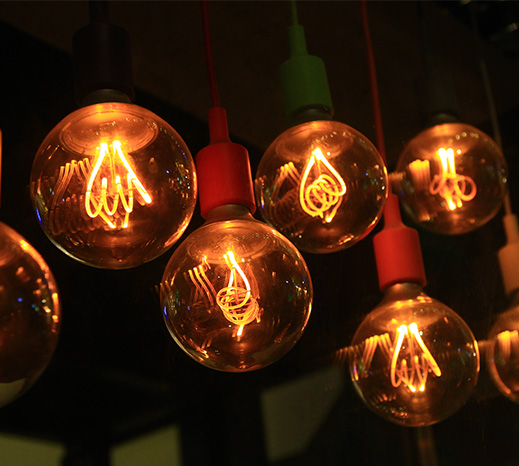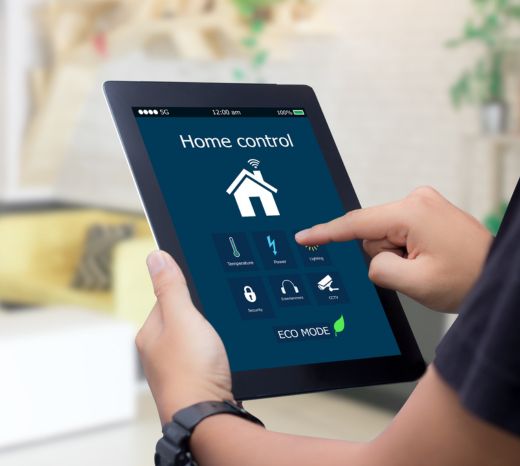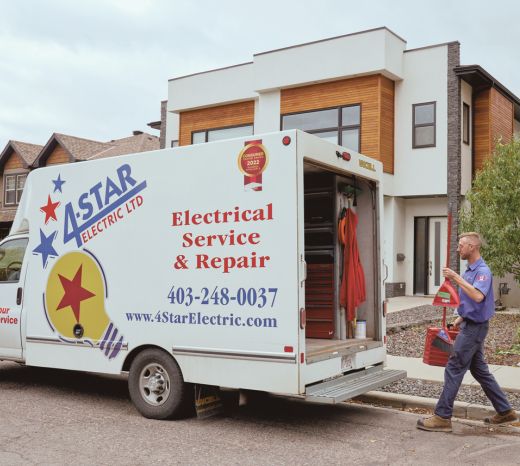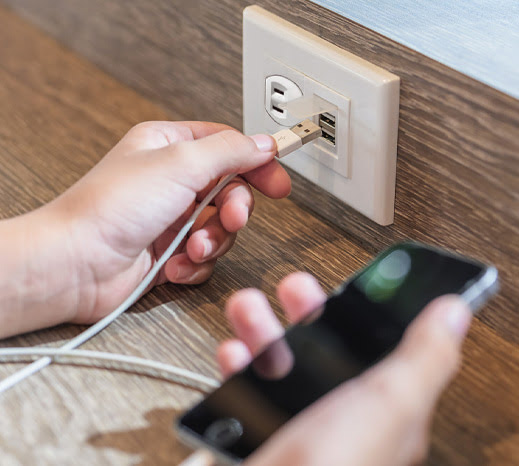Dimmer switches are a great way to reduce energy output, add ambience, and save on maintenance costs. While all dimmers have these benefits, not all of these devices are built the same. In fact, there are several different types of dimmers designed to work with specific loads, lighting sources, and circuits.
Let’s discuss the possibilities if you want to update the feel of your home interior with dimmers. Different bulbs and different switch styles will change how your lighting performs.
And it’s always wise to consult an electrician for certified advice on what types of dimmers are safest for your setup.
I’m Just Not Sure We’re Compatible
Every light in your home is connected to an electrical circuit that supplies power to the bulb. A traditional light switch can be simply turned on or off to cut this power. A dimmer regulates the voltage passing through a circuit, essentially reducing the power to a light and changing the brightness.
The type of light circuit you have installed and the type of dimmer you’re using will determine what switches can be used and how your lighting will function. Dimmers used in the wrong combination can cause your lights to flicker or more serious electrical damage.
Single Pole Dimmers
Lights controlled by a single switch are compatible with single pole dimmers. The switch controls a single light or single set of lights.
3-Way or 4-Way Dimmers
These dimmers are used on light circuits with multiple switch locations. A switch at the top and bottom of a staircase is a good example.
3 or 4-way dimmers only allow for a single switch with dimming ability. The other switches can only act as on/off controls. The dimmer is set to the desired level, and the on/off switches will set lighting back to that level when turned on.
Multi-Location Dimmers
Multi-location dimmers can be installed with multiple dimmers on the same circuit. The light intensity can be controlled by multiple dimmer switches.
These dimmer switches are compatible with 3-way non-dimmers and smart home systems.
Plug-In Dimmer
Plug-in dimmers are devices that connect to a wall outlet on one side and a light fixture on the other. They control light intensity with an external dimmer that regulates voltage to the light.
These are most common for floor lamps and table lamps.
Bulb Type & Dimmers
Bulb type is a key factor in knowing what types of dimmers you can integrate into your existing lighting. Mixing and matching a new dimmer with bulbs that aren't compatible will probably leave you needing a new bulb. Or worse, damage to the circuit or other electrical components.
Different bulbs also have different hues and light tones that will change the feel and ambience of your room. Before adding or exchanging a dimmer to any part of your home, confirm what type of bulbs you used in that room.
We recommend using the same type and wattage of bulb throughout an entire circuit. It will make for easier light settings and prevent complications if there’s a problem.
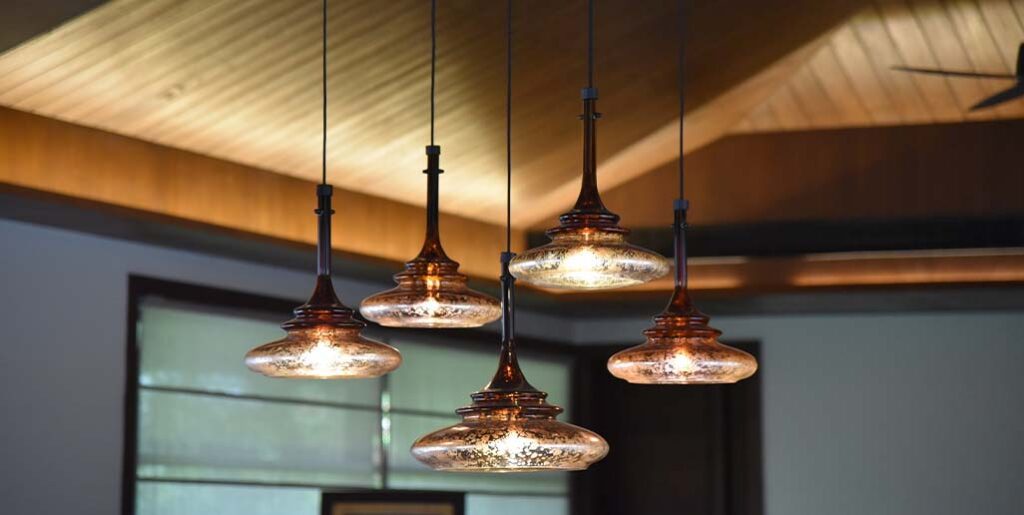
Incandescent/Halogen
These types of bulbs require leading edge or resistive dimmers due to the filaments inside the bulbs. Modern resistors function by switching the light circuit on and then off in quick succession. This approach reduces the total amount of electricity travelling through the circuit. The on and off periods may not be equal, resulting in a net direct current voltage.
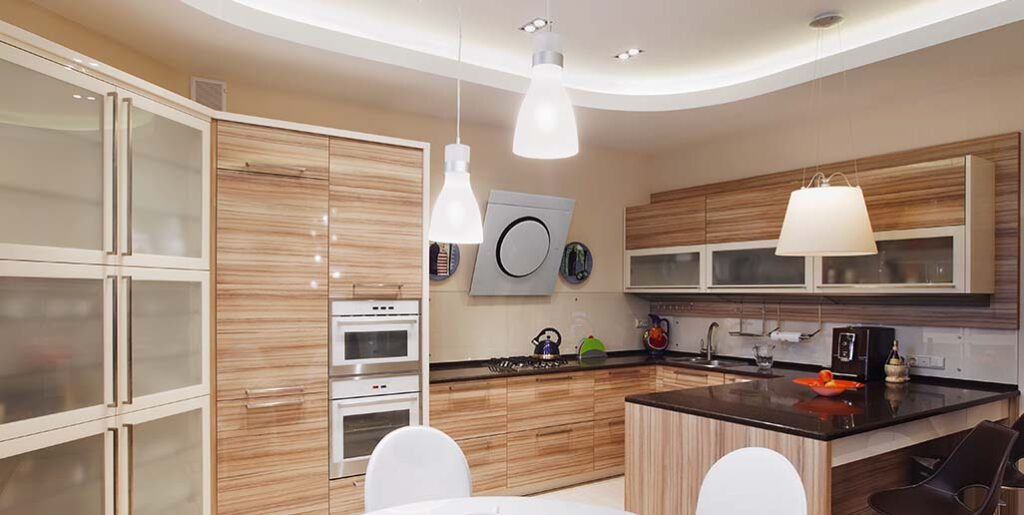
Magnetic Low Voltage (MLV)
Transformers that reduce higher voltages to less than 30 volts are called low-voltage transformers. In a modern home, under-counter or low-voltage lighting are just a few devices that use MLV. Incandescent dimmers can damage magnetic transformers, so an inductive dimmer switch must be used.
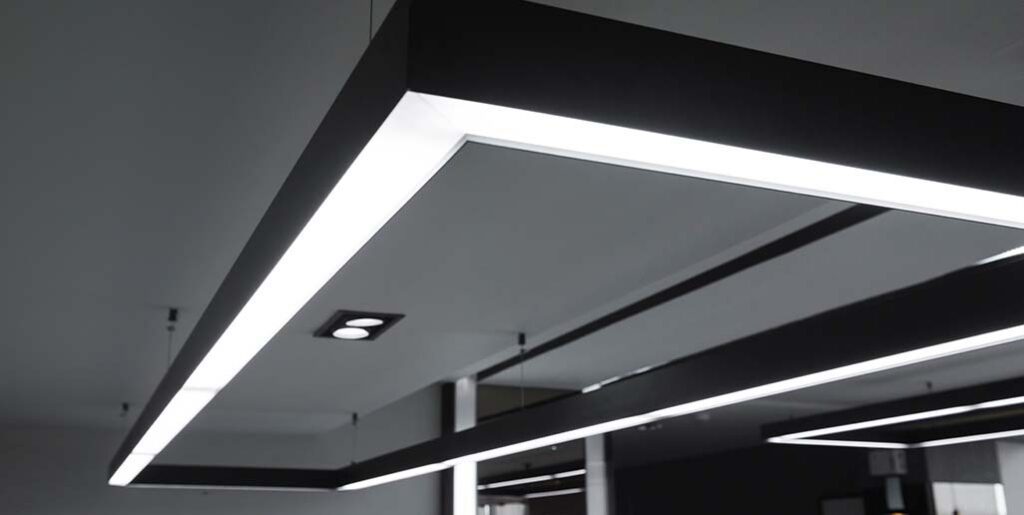
Fluorescent
Not all fluorescent lighting is compatible with a dimmer switch. These light sources require a fluorescent dimming ballast. This is because fluorescent lighting works very differently than halogen or LED lights. Electrodes are heated to excite illuminating gas inside the tube. When adjusting one of these dimmers, there can be a sudden jump or drop in brightness.

Light Emitting Diode (LED)
LED lights are powered by internal or external LED drivers. Because of this, special dimmer switches are often required to change the brightness of these lights. LED-ready dimmers or trailing edge dimmers are best suited for LED lighting.
Trailing edge dimmers can handle lower wattage loads comfortably, which is why they work with low-wattage LED lights. This type of dimmer is soft-start, which means the light starts low when you turn it on and can be adjusted for more brightness. Trailing edge dimmers are more expensive than leading edge dimmers but also more silent.
That being said, not all LED lights are dimmer-compatible. Knowing your bulb compatibility before installing a switch is essential to avoid damage, flickering lights, and safety risks.
Types of Dimmer Controls (Switches)
The most basic light switch is known as a toggle switch. This classic protruding switch can easily be flicked up and down to control lights being on or off. Rocker switches follow the same on/off principle but are more flush with the wall and require less pressure.
Dimmer switches give you more lighting control than simple on/off switches. And within the dimmer switch family, several options can help you customize your lighting experience.
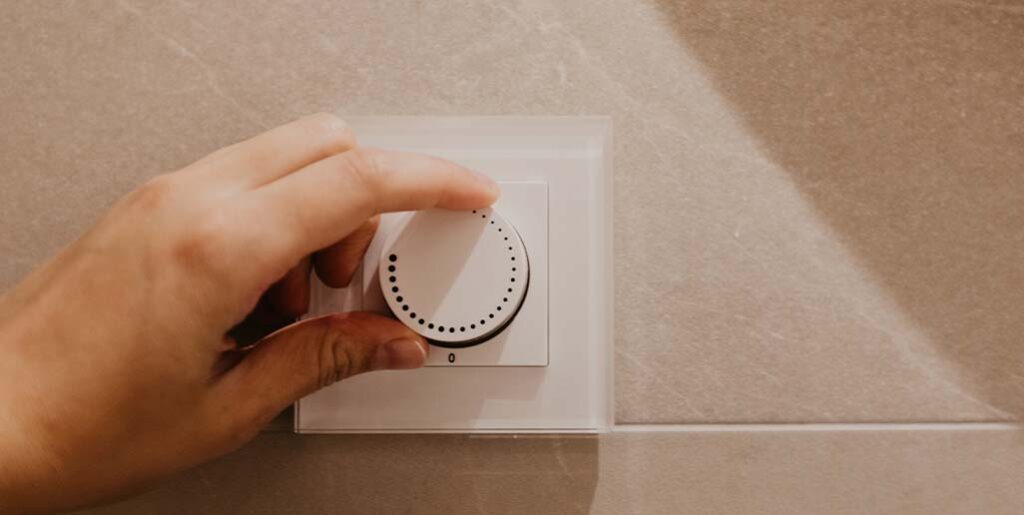
Rotary Dimmers
These switches feature a wheel that rotates for more or less light intensity. The brightness level must be re-established each time the light is turned on as there is no on/off toggle.
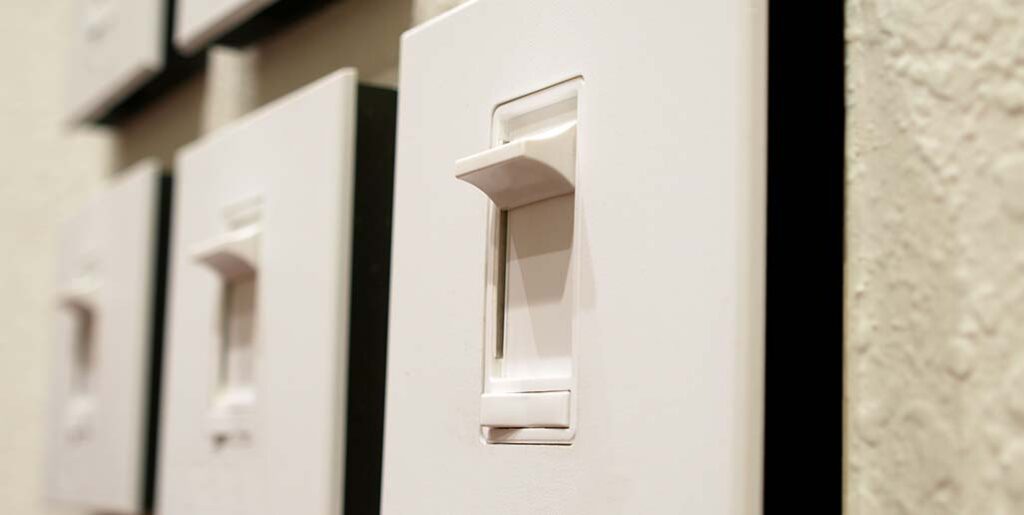
Slide Dimmers
Depending on the design slide dimmers can lack or be equipped with an on/off toggle. A sliding lever is raised up to increase light intensity and returned to the bottom position to turn the light off.
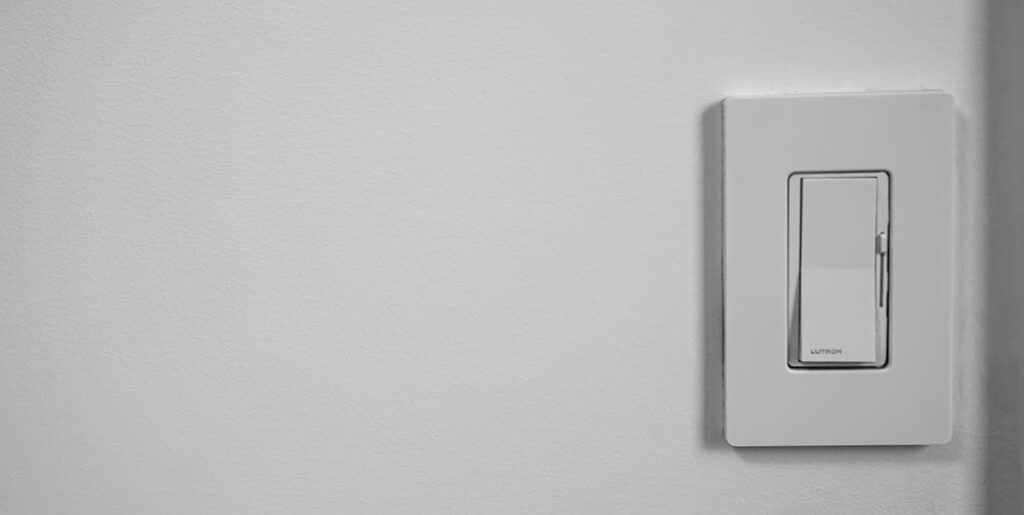
Rocker with Slide Dimmer
These types of dimmers combine a rocker switch's ergonomic design with a dimmer's control. A slider can be used to preset brightness levels or change light intensity. When the light is turned on, it will automatically adjust to preset brightness.
Some rocker dimmers are controlled by repeatedly “rocking” the switch (pressing up) through increasing brightness levels.
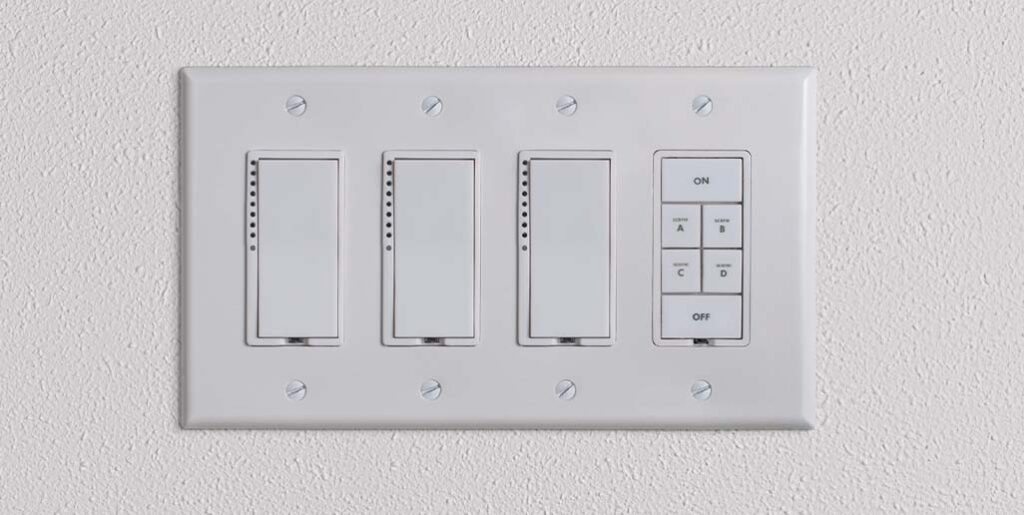
Tap, Touch, or Button Dimmers
These dimmers are controlled by pressing a series of buttons corresponding to preset brightness levels. Traditional tap dimmers use mechanical buttons, but newer switches may use led touch switches with digital controls.
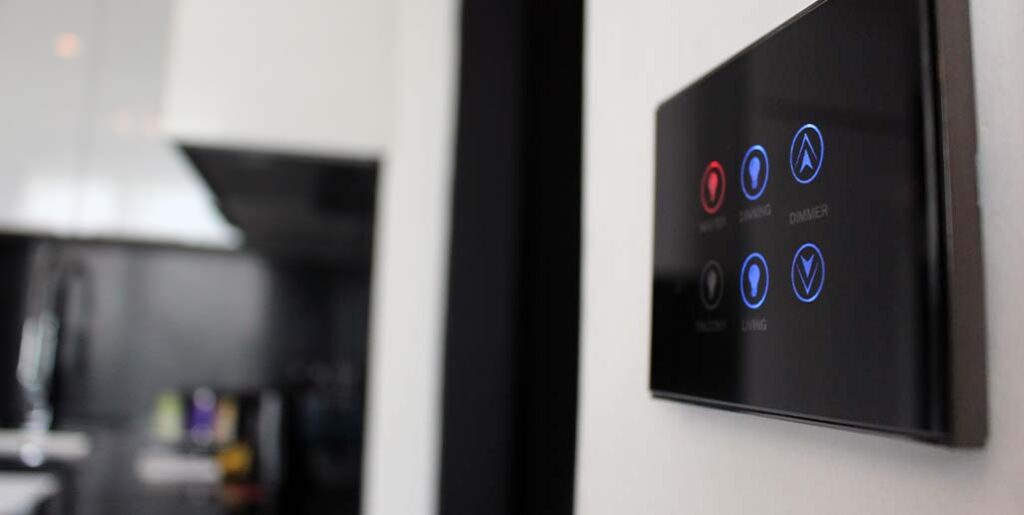
Smart Dimmers
Smart dimmers offer the most advanced lighting control. These switches can be controlled remotely through a smartphone or smart home system. Smart dimmers can be programmed with specific mood settings like “movie” or “games night.”
The most complete home lighting systems integrate multiple smart dimmers that collaborate to adjust lighting across your entire home.
Don’t Feel Dim, Call 4-Star!
It’s obvious that dimmer switches are not one-size-fits-all devices. Each lighting source and load requires special consideration when choosing what switches to use. And depending on the room and your lighting desires, you may want to splurge on more expensive dimmer technology.
At the very least, you must match your bulbs with a compatible dimmer switch and ensure that the dimmer you choose will work with your lighting circuitry. And, of course, any dimmer switch being installed must be done after turning off power to the area and following electrical safety guidelines.
The experts at 4-Star Electric can help you determine the safest and most efficient dimmer choice for your lighting set-up. Take the guesswork out of your lighting upgrade project and call us to help you design better, beautiful lighting for your home interior.
